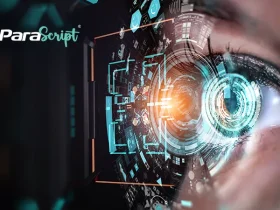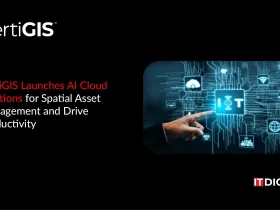”The digitization of everything – fuelled by the five technology superpowers of ubiquitous computing, cloud-to-edge infrastructure, pervasive connectivity, sensing and AI — is driving a new era of innovation across every industry.”
Ahmed, can you tell us about your professional background and your current role at Intel Corporation.
Having over two decades of experience in the telecom, communications, and IT industries, I joined Intel in 2015 with a mission to accelerate the adoption of emerging technologies within cloud and communication service providers. The focus was on network transformation, new emerging technologies, 5G and artificial intelligence. Having spent the last eight years at Intel, I have seen the company grow rapidly, truly spearheading technological change across the globe.
Prior to working with Intel, I spent the previous decade working within various multinational companies that specialized in the telecommunications industry.
How has the ICT industry evolved over the past 25 years since you joined Intel Corporation, and what major changes you have observed in terms of technology, market trends, and industry landscape?
As we enter the fourth industrial revolution, which is marked by a fusion of technologies that blur the lines between our digital, physical, and biological worlds, technological transformation continues to impact everything from healthcare to manufacturing. The semiconductor industry offers an early glimpse of how the ongoing industrial revolution will bring life-changing products into the world, demonstrating the potential to improve everyone’s quality of life.
As technology and corporate citizenship converge, I believe the key to maximizing opportunity is to connect people, technology, and purpose, with particular attention to engaging the members of our workforce in developing their unique talents to solve the shared challenges of our time. In this way, we will foster a more talented and motivated workforce and, more importantly, achieve our goal of high social impact.
In addition, the digitization of everything – fuelled by the five technology superpowers of ubiquitous computing, cloud-to-edge infrastructure, pervasive connectivity, sensing and artificial intelligence — is driving a new era of innovation across every industry.
As AI is paramount to rapid technological innovation, what is the current state of the skills gap in the field of AI, and how does it impact technological advancements?
The field of artificial intelligence is constantly evolving, and the skills required to work in the field is changing rapidly. Due to the ongoing skills gap in the field, this has posed as a major challenge for organisations looking to hire professionals for the development of AI technologies.
In my opinion, one of the primary reasons for the skills gap is the rapid pace of technological innovation in the field of AI. AI has led to new techniques, tools and technologies that are consistently emerging, which makes it extremely difficult for individuals to keep up with the ongoing advancements.
The skills gap in AI can pose significant impacts on technological advancements. Companies may struggle to develop and implement AI technologies due to the lack of skilled professionals. This can not only delay the pace of innovation but also make it harder for firms to compete in the ever-evolving marketplace.
To mitigate the impacts of the skills gap in AI, Intel has heavily invested in education and training programs to develop the next generation of AI professionals. Additionally, Intel has continued to partner with universities and research institutions to help advance AI research and development.
How can emerging technologies, such as virtual and augmented reality, ML, and IOT, help to address the skills gap in fields such as AI and other technology-related areas?
Emerging technologies such as virtual and augmented reality, machine learning (ML) and internet of things (IoT), often play a significant role in addressing the skills gap in AI and other technology-related areas.
Firstly, emerging technologies can be used to provide immersive and interactive training experiences for individuals to learn the skills required to work in these fields. For example, Intel can use virtual and augmented reality to provide more effective and engaging training experiences for its employees. This helps develop the skills required to work in such fields and continues to upskill employees.
Secondly, machine learning and IoT can be used to automate repetitive tasks, buying back time from skilled professionals that can be used for more complex undertakings. This often helps organisations to operate more effectively while reducing the demand for skilled individuals to perform mundane tasks, reducing the burden on the skilled workforce.
Thirdly, emerging technologies facilitate collaboration and communication between skilled employees across different locations and time zones. This helps improve the sharing of knowledge and expertise, which is extremely crucial in AI and other technology-related fields.
Lastly, machine learning and IoT can be used to analyse large amounts of data quickly and accurately, enabling organisations to make better decisions and identify patterns and trends that might not be caught by humans. Firms such as Intel can gain insight into areas where skills gaps may exist and take proactive steps to address them. These types of initiatives help organisations identify areas where skills gaps exist and take proactive steps to address the issues.
Overall, emerging technologies continue to provide new and innovative ways to address the skills gap. By leveraging these technologies, businesses continue to develop the next generation of skilled professionals, positioning themselves for success in a rapidly changing technology world.
What strategies can companies employ to ensure their workforce is continuously upskilled to keep up with the rapidly evolving technological landscape?
In order for companies to ensure their workforce is continuously upskilled, it is essential to develop a culture of continuous learning. This can be executed in a variety of methods, including providing employees with the right professional development and training opportunities, providing on-the-job training empowering employees to learn new skills and technologies that can be used in a practical setting, encouraging peer-to-peer learning by creating communities of practice which facilitates a platform for knowledge sharing, and offer career development opportunities which provide the skilled workforce with progress in their careers.
Also, companies can partner with educational institutions to provide their employees with access to specialized courses and training programs.
Encouraging and providing skilled professionals with the right tools will help individuals keep up with the rapidly evolving technological landscape.
Do organizations require a new business model, new ways of working, and a flexible culture that fosters the development of critical new skills?
It’s important for organisations to adapt and evolve to remain competitive as new technologies continue to emerge and disrupt traditional business models. Firms need to embrace a shift in mindset and a willingness to accept change, innovation, and continuous learning. This requires organisations to embody new business models, new ways of working and a flexible culture that fosters the development of critical new skills.
In today’s world, organisations need to be agile and flexible, enabling them to pivot quickly in response to the ever-changing marketplace. In the past, failure was often looked down upon, but now, failure needs to be viewed as an opportunity for learning and growth.
Fostering a culture of continuous learning where employee development is the highest priority is key for firms to empower their workforce, which in turn will result in success for the business.
Organisations need to encourage collaboration and teamwork, breaking down silos and advancing cross-functional communication and collaboration. This requires a culture of openness and transparency, where ideas are shared, and constructive feedback is encouraged.
Lastly, as the technology world continues to change at an unimaginable pace, organisations need to embrace emerging technologies to remain competitive and drive innovation.
What is your view on competition in the tech industry, and how does Intel can remain successful?
Competition in the technology industry is fierce, with many companies consistently vying for market share and customer loyalty. The industry is rapidly changing, with new technologies constantly emerging and existing ones quickly becoming obsolete. In order to remain successful, it is imperative for companies to continue to innovate, stay agile, and adapt to the evolving market conditions.
Intel is primarily focused on the semiconductor industry, and we continue to remain successful by investing in research and development to enhance and further expand our product line. This includes not only enhancing our existing products, such as microprocessors, but also developing new products and technologies that continue to break barriers.
Additionally, Intel places high value on the strong relationships developed with our customers and partners, aiding us to stay successful in the industry. We work closely with OEMs to ensure our products are integrated seamlessly into their systems and are continuing to develop connections with software developers to ensure our products are optimised for their applications.
Overall, the key to remaining successful in the tech industry is to remain agile, innovative, and customer-focused, and to be willing to adapt to changing market conditions. By doing so, companies such as Intel can continue to thrive in an ever-changing and highly competitive industry.
What is the biggest problem you or your team solving this year?
Intel is working on various initiatives to give the company a competitive edge. We are improving our manufacturing processes, introducing new products and technologies, and strengthening our partnerships with other companies.
Additionally, with the growing demand for AI and machine learning, Intel is investing in developing solutions that can address the computing needs of these technologies. Another area of focus for Intel is the Internet of Things (IoT), where we are looking to provide edge computing solutions to enable connected devices and smart infrastructure.
As we work heavily in the semiconductor industry, we are tackling the global semiconductor shortage by increasing our production capacities and investing in new manufacturing facilities.
As sustainability is a large focus for us, Intel is taking significant steps to reduce its environmental impact, promote responsible sourcing, and support employees and communities. Intel has identified a goal to achieve net positive water use, 100 per cent green power, carbon-neutral manufacturing, reduce greenhouse gas emissions, and reduce Scope 1 and 2 emissions by 90 per cent by 2030, and is working tirelessly to ensure the firm is on the right track. We are also committed to responsible sourcing of materials and have implemented programs to promote transparency and human rights in our supply chain.
Is there anything that you’re currently reading, or any favourite books, that you’d recommend?
Recently, I have been reading books recommended by entrepreneurs and experts in the startup community, which provide valuable insights for individuals looking to understand, start or grow a business.
I would highly recommend ‘The Lean Startup’ by Eric Ries, as the book provides insights on how to build and grow successful companies by applying lean start-up principles.
Also, ‘The Hard Thing About Hard Things’ by Ben Horowitz, offers practical advice and insights from the experiences of a successful startup CEO, and covers topics such as managing difficult situations, making tough decisions, and building strong company culture.
Thanks, Ahmed Ibrahim!
Intel’s mission is to shape the future of technology to help create a better future for the entire world. By pushing forward in fields like AI, analytics and cloud-to-edge technology, Intel’s work is at the heart of countless innovations. From major breakthroughs like self-driving cars and rebuilding the coral reefs, to things that make everyday life better like blockbuster effects and improved shopping experiences — they’re all powered by Intel technology. With a career at Intel, you have the opportunity to help make the future more wonderful for everyone.




































